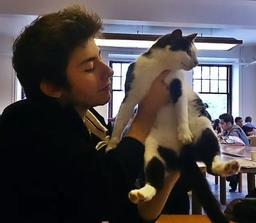As you've read in the previous lesson, Turkish expresses time in relative clauses using lexical means, which means adding words to express the time.
| I saw the man who was running today. | Bugün koşan adamı gördüm. |
| I saw the woman who was walking yesterday. | Dün yürüyen kadını gördüm. |
The words bugün and dün are normally interpreted to be when the running happened. However, as Turkish is very flexible in its word ordering, it is also possible to interpret bugün and dün as modifying the gördüm. That kind of interpretation would mean the act of seeing happened today/yesterday, not the running.
There is no way around this, so the sentences are potentially ambiguous. However for pragmatic reasons we always assume that when you use such a construction, you aim to give temporal information about the verb of the embedded clause.
With the help of relativizers we can express two or more events in the same sentence, which are normally expressed using two sentences.
| Sentences without Relative Clause | Sentence with Relative Clause |
|---|---|
| Adam koşuyor. Onu gördüm. | Koşan adamı gördüm. |
In the sentence with the relative clause above, Adam koşuyor is transformed into an embedded clause and used as the object of the main clause.
When relativizing sentences with var, yok, değil, and when relativizing to be sentences (e.g. Öğretmen mutlu), we use the auxiliary verb olmak in its relativized form olan. The negative form olmamak becomes olmayan when relativized.
| Full sentence | Relative Clause |
|---|---|
| Öğretmen mutlu. | Mutlu olan öğretmen |
| Kamil akıllı değil. | Akıllı olmayan Kamil |
| Öğrencinin parası yok. | Parası olmayan öğrenci |
| Erik'in kedisi var. | Kedisi olan Erik |

